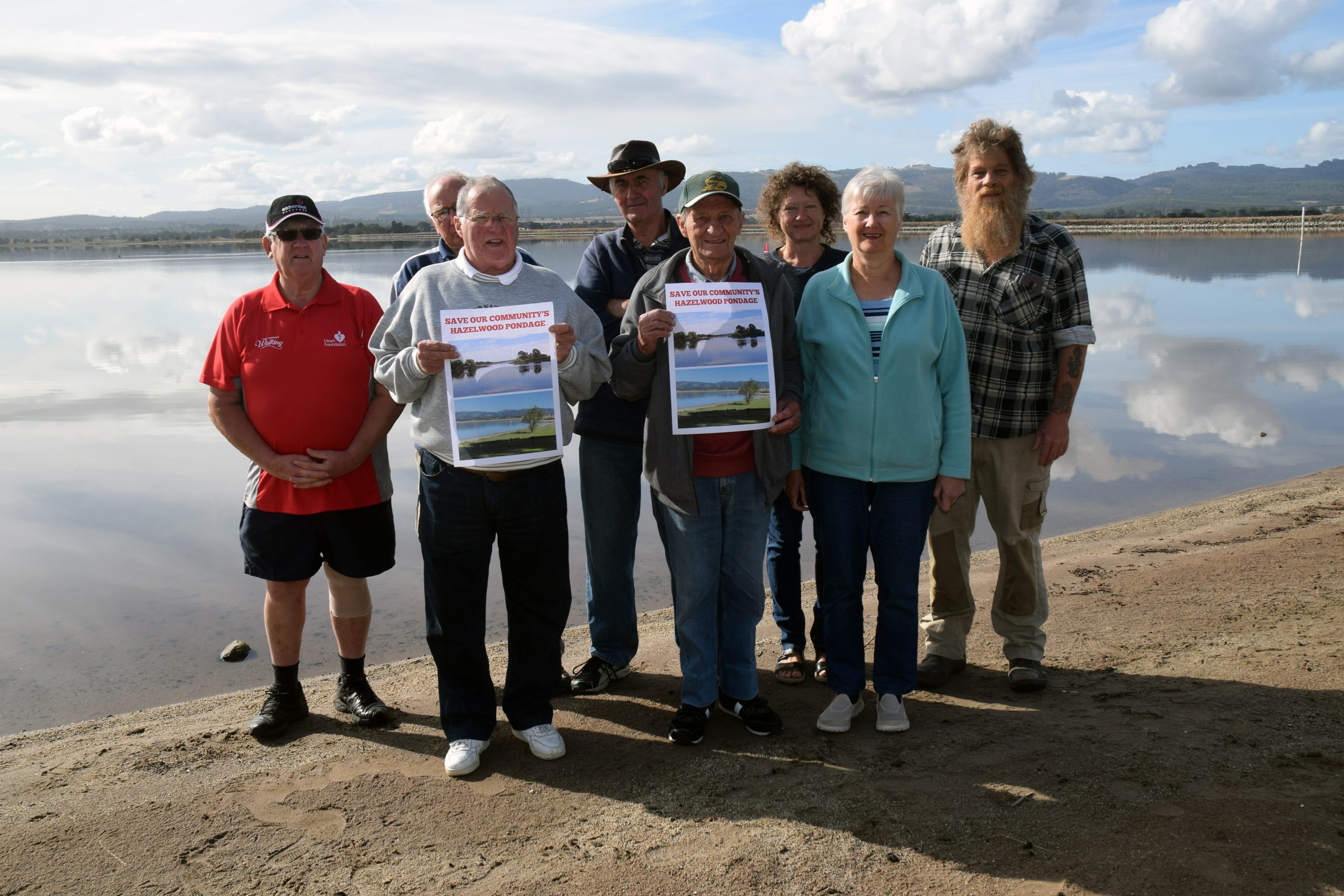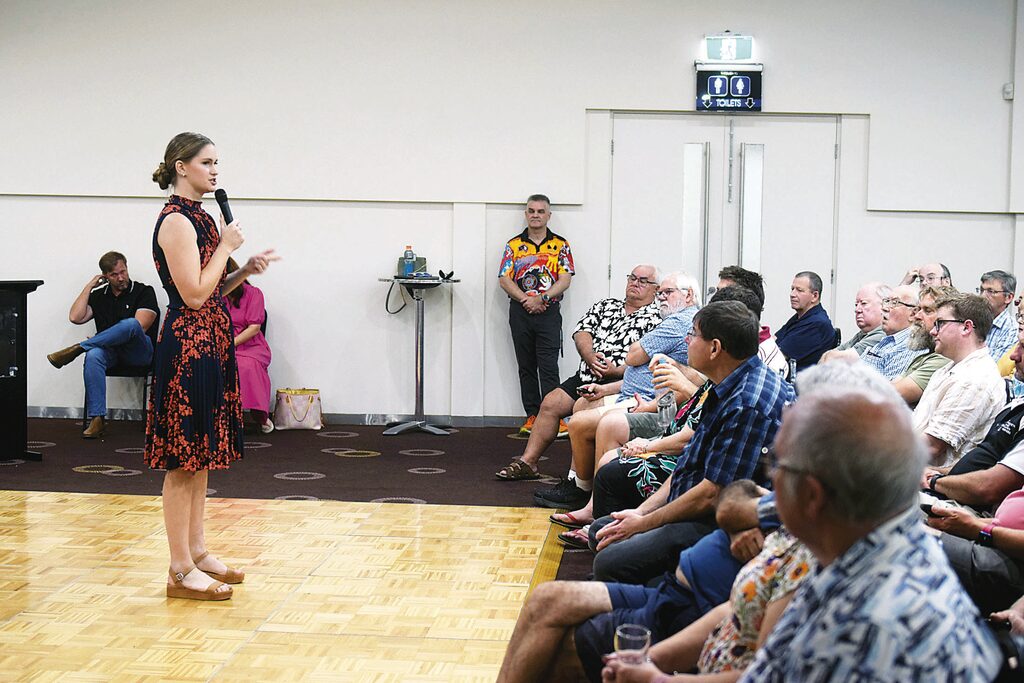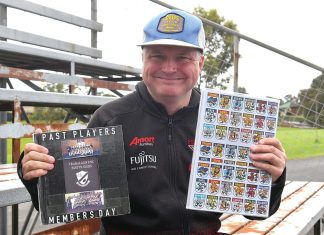By PHILIP HOPKINS
GRACE Stanke makes an impression.
At just 22, the 2023 Miss America and nuclear engineer seemingly has the world at her feet. Microphone in hand, walking around the floor of the Italian-Australian Club in Morwell, she had the rapt attention of the estimated 300 people in the audience at the recent Nuclear in Australia event.
All were thinking: ‘How did you become a nuclear engineer – and why?’ As she quipped, “I don’t have the typical nuke engineer look!”
Thus began an entertaining, quirky and ‘folksy’ story, as the young nuclear expert with a bubbly personality engaged the audience.
“At 16, I had no idea what I was going to do with my life. Most people don’t,” she said – but her extended family hassled her about her future.
“I decided I had to get it together.”
She loved science and maths – answers were either right or wrong – and luckily she had a father who was a civil engineer with whom she visited construction sites.
“It was exciting seeing bridges come up and down, and knowing that my dad, using maths and science, was helping people in their daily life,” Ms Stanke said.
Maths and science build bridges, have a social role; engineering was thus the broad direction she wanted to move in. But which sort of engineering?
“Electrical? My brother went into electrical, no way – I won’t follow in his footsteps again! Civil? My dad did that, cool, but…”
Then she saw nuclear. “Man, how cool would that be, to say I’m a nuclear engineer,” she said. Her knowledge of nuclear was restricted to World War 2 history and maybe one or two reactors in the US.
“It was not talked about. The other option was rocket science.”
Then the talk with dad. “He had his parent voice on – you know what that is. I told him, ‘I’m thinking about nuclear or aerospace engineering’,” she said.
“He looks at me, ‘Grace, don’t go into nuclear, there’s no future there’. What does a teenage daughter do when told not to do something? She goes and does it! I went into nuclear,” she said.
What made her stay in nuclear and become such a passionate advocate for it?
Ms Stanke started her university course in 2019.
“What I learnt in that first semester made me change my perspective on nuclear. I went from knowing only two things to seeing it in my everyday life. I learnt there are more than two reactors in America – there are 94 to the present date producing 20 per cent of America’s power; it has been doing that for about 60 years,” she said.
“I didn’t even know I had a nuclear plant only two hours from my hometown, creating 14 per cent of my home state Wisconsin’s electricity, keeping the lights on in cold snowy days.”
On the other side, apart from reactors, she learned about nuclear medicine, which enabled cancer sufferers, like her dad, to survive because of radiation treatment. Then there was the reality of everyday home life.
“Have you eaten a banana today? You would get more nuclear radiation than if you lived next to a nuclear plant for a year; bananas are radioactive. Avocados, avocado toast – they are radioactive, smoke detectors use radiological isotopes,” she said.
“Nuclear science plays a massively positive role in our life. If it’s doing this much good but we don’t talk about it, imagine how much more it would if we say. ‘Nuclear is worth talking about’. That’s when I decided to start speaking about it.”
Nuclear plant safer than a grocery store: Stanke
HOW many industries are safer than working in a nuclear power plant? Young nuclear engineer Grace Stanke had a surprise answer for the audience.
“Accounting, data analytics and four other similar jobs; there are six industries safer than working in a nuclear power plant,” she said.
“Send a 16-year-old kid to work in a grocery store, they are at higher risk than in a power plant to get an injury. It’ safer to work in a nuclear power plant than a grocery store. That’s the high standard we have.”
However, nuclear accidents still loom large in people’s fears about the safety of nuclear power plants. Ms Stanke illustrated the emphasis on safety through her own experience as a nuclear engineer. In her internship, her job was to create a testing simulation code, using the extensive documentation that records every industry mistake and workplace injury.
Her work was checked and rechecked internally and sent overseas where it was extensively peer-reviewed using different checklists and procedures by independent experts. A final meeting discussed the worst-case scenario.
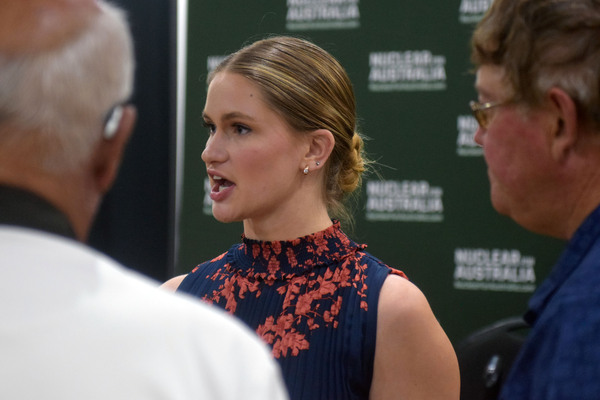
“If it does not work, are we ready? Unless the answer to the question was ‘yes’, the code would not be implemented anywhere,” Ms Stanke said.
“In reports that operators use, we promote a questioning attitude.”
Ensuring safety is dominant. In the Russian invasion of Ukraine for example, an important Ukrainian nuclear plant was captured by Russia and operators were working at gun point.
“The Atomic Energy Commission stepped in. There has been no accident, despite the active war zone,” she said.
Ms Stanke said spent nuclear fuel in the US was kept in dry concrete casts.
“Fuel rods that have gone through three cycles creating electricity and fuel are taken out and sit in a cooling pool, stays there for seven and up to 30 years, depending on plant licence conditions,” she said.
“It’s taken out and put into dry casts. It’s not very exciting – they are just giant concrete cylinders. Spent nuclear fuel doesn’t mean it’s done being used – it isn’t just ‘waste’. You can re-process nuclear fuel – 90-95 per cent of that can be reused and put back into a reactor; two per cent can be used for a different type of fuel that goes into a different reactor.”
Ms Stanke said this spent nuclear fuel had been temporarily stored in these dry casts in the US for 60 years.
“Because of those dry casts and that technology, there has never been a leakage from of commercial nuclear generation industry,” she said.
The casts are thoroughly tested, dropped in the process from 20 feet onto the weakest point.
“Does it break? No. If it does, they don’t use it, I can promise you that much. That is the type of accepted testing that goes into that temporary storage,” she said.
Permanent storage is in a geological repository.
“In Australia, you guys have a unique opportunity to build the perfect facility for that.”
In preparing and reviewing a product that is going into a nuclear power plant, a questioning attitude was necessary, Ms Stanke said.
“That patience, kindness and that care, promotes civil discourse,” she said.
Nuclear was a heated subject in Australia, but a conversation with opponents provided a humanistic attitude.
“We are all working towards the same goal – cheap, reliable electricity and a questioning attitude, civil discourse, kindness and respect and a willingness to say we are all here together.”
Nuclear timeframe, concerns spelled out
A NUCLEAR power station in the Latrobe Valley would create thousands of jobs in construction, operation and maintenance and be a catalyst for spin-off industries, US nuclear exports told the nuclear information night in Morwell.
With an experienced builder of nuclear plants like South Korea, the first 1000 MW unit could probably be built in about seven years and additional units after that within 10 years, they said.
The information meeting on nuclear power, held at the Italian Australia Club last week, was organised by Nuclear for Australia and attended by up to 300 people. The visit was sponsored by the entrepreneur and philanthropist, Dick Smith, the patron of Nuclear for Australia.
Chief speaker was Grace Stanke, 22, the 2023 Miss America and a nuclear engineer; an American nuclear expert, Mark Schneider, who is Chief Nuclear Officer for UBH Group in Australia; and Kirsty Braybon, Adjunct Nuclear Law Lecturer at the University of Adelaide. They answered numerous questions from the audience.
Ms Stanke said thousands of jobs would be created in construction, while one 1000MW nuclear unit would be run by 700-1000 workers. An outage could bring in another 3000 jobs.
“Add more units to the power plant, multiple reactors, that means more jobs and more electricity for the Australian grid,” she said.
“It is not only the industries they actually power such as AI data centres – there is massive international load growth now – they can create more than just electricity. District heating, hydrogen production – there are a lot of different things added on as secondary industries, lots of avenues for growth.”
Construction time and life span
MR Schneider said he believed a power plant in the United Arab Emirates under the Korean model was built in about seven years.
“Not more than seven, seven for one unit online, 10 years for all four units online. They got better with each one – faster and cheaper. That also occurs in the US with the submarine program; the more you do something, the better you get at it,” he said.
“The Valley is a good location, already operating power plants and cooling water source. Get the repeal to occur and the regulatory framework in place.”
Ms Stanke said a nuclear plant was usually licensed for 40 years, but also had undergone power upgrades.
“Even though some of the plants were built in the ’60s and ’70s, they are producing more electricity now because of new technology and upgrades. They can go through subsequent licence renewals, some go up to 60 years, you’re looking at 80, 100 years,” she said.
“The whole life span, we don’t know where the end is yet. That’s jobs for generations, dads work with sons and daughters; that can have a major impact on communities, jobs for generations.”
Mr Schneider said it would work for communities like the Valley, enabling fathers to work with their sons and daughters. They were well paid. One man, for example, started work as a janitor, then became an operator, aged 27 and making $US330,000 a year.
“That is pretty common in the industry,” he said.
Ms Stanke said internationally, the first new nuclear build in the US for 30 years went over time and over budget due to a lack of standardisation and being the first of its kind. This was in contrast to South Korea, which has a standardised design, and a strong supply chain.
“They have built reactors for (the) past 40 years. They do it on time and on budget,” she said. Both she and Mr Schneider acknowledged they were not experts in construction.
However, Mr Schneider cited one US company that produced gas, coal, nuclear, wind and solar.
“They sell their power at a rate, and when you take that rate and compare it to the cost associated with the generation – these are all power plants on the grid – nuclear has an 11 per cent profit margin, gas seven per cent profit margin, coal per cent per cent, wind and solar sold at a loss. American taxpayers are paying out the subsidies,” he said, to laughter around the room.
The lawyer, Ms Braybon, said there was a belief in Australia that the country doesn’t have a regulatory framework in place to allow nuclear plants to be built.
“That’s crap,” she said.
“We regulate and operate the Opal reactor in Sydney, which uses nuclear radioactive isotopes. There is a regulatory model in place, but we would have to make some amendments to the Safety Act to facilitate it – minor amendments, that would not take long.”
Ms Braybon said there were other comparisons.
“Australia built the Opal reactor in nine years. That was the first of its kind. That’s not what is being proposed in Australia. In the Senate inquiry, some experts were saying 11 to 13 years (for construction). If Australia can deliver Opal, the first of its kind, in nine years, why can’t we build a nuclear power reactor?”
Obsolescence?
COULD helium-free fusion, carbon capture and battery technologies develop faster than nuclear built in Australia?
Mr Schneider said the fact is, “you want a blended grid, no matter what you are doing”.
“You don’t want 100 per cent nuclear grid. In the US, it produces 20 per cent of our power. Those reactors were licensed for 40 years, but many are on their second subsequent licence, a licence for 80 years of operation, with discussion going out to 100 years of operation,” he said.
“Build these, they will be for a long time. The demand for electricity is only going to go up – the demand for AI. There is so much more electricity demand because of this thing called the internet that everyone is using all the time. We welcome all those new things to the grid. ”
Ms Stanke said importantly, Australia should not be building its own reactor.
“It is up to the will of the people. New technologies will come through, but let’s build with technologies that are proven and have been operating for decades, or a more modern Westinghouse reactor so there is proven technology we can start building as soon as the ban is lifted in Australia,” she said.
“There will always be new technologies, but the most important thing is that it won’t be a first of its kind in Australia.”
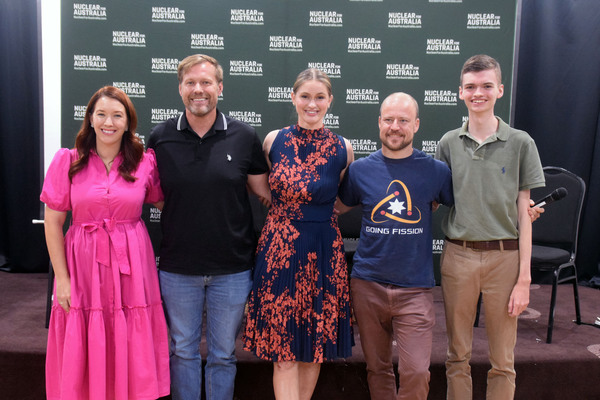
Retrofit a current coal generator?
MS Stanke said this would only be for small nuclear reactors.
“To have a currently existing coal plant and take out some parts and put in new gear – it’s got to be better to build a large reactor that’s going to produce more electricity, provide more jobs, and will be more reliable,” she said.
“It’s better to focus internationally, globally – the US, Canada, France. Concentrate on countries that are actively using nuclear.”
Ms Braybon said where coal stations were located, it was not just about the technology.
“It’s especially about the community, the region and the area – the existing transmission lines, workforce and ensuring jobs for communities that are transitioning through closures,” she said.
How can Australia deny domestic use yet export uranium to other countries?
“CAN Australia have its yellow cake and eat it too?” quipped Ms Braybon.
“It’s hard, we have uranium mine since 1950 in South Australia. We are well regarded around the world for some time. We export 100 per cent of it, and are considered around the world to be one of the best generators. Yet we ban nuclear power, we ban uranium enrichment, we ban nuclear waste and disposal in some states. It logically doesn’t make sense. Uranium mines are banned in Queensland, Western Australia, NSW, and Victoria, yet we can do it safely in SA and export it to the rest of the world? Logically it doesn’t make sense.”
Civil affected by military use of uranium?
MR Schneider said it was affected.
“Particularly in the US, I am frustrated in the fact, you hear about nuclear leakage, it’s from US weapons production. As an operator in the commercial engineer, power plant operator, I have to answer for the sins of the US nuclear weapons community,” he said.
“Frankly, I am tired of it for 23 years, I am tired for answering to the mistakes my US government has made in nuclear weapons production then having to answer, ‘What do you mean, it’s not going to leak?’ I agree, it’s a huge disservice done to the commercial US nuclear industry. Nuclear waste – it’s a solid. Solids don’t leak. I have to explain that because there is radiated water from US nuclear weapons production.”
Chernobyl
MR Schneider said it was a terrible accident.
“It’s also a terribly designed reactor they operated in direct violation (of its conditions). The Chernobyl type reactor – there are several of them still in operation today. There have been no incidence because they fixed themselves from how they operated,” he said.
“No reactor of Western design could undergo the Chernobyl experience in that manner because of the design of the reactor. The physics doesn’t work, and you have containment structures.”
Ms Braybon said Chernobyl was the reason the world has the convention on nuclear safety.
“It’s also the reason we have the joint convention on nuclear waste and spent fuel. In response to that accident, the International Atomic Energy Agency, with the rest of the world, came together and they came up with two international treaties to set up schemes to address these problems that arose because of that accident. Australia has signed and implemented those treaties and so has half the world,” she said.
Mr Schneider said in the nuclear industry in the US, “we conduct annual training on Chernobyl, Fukushima and Three Mile Island”. The worst US incident was in Idaho, where three people were killed. “If you were to ask me afterwards, I am safer in my submarine and nuclear reactors I operate because of that accident,” he said.
Ms Stanke said: “we get all of the information from nuclear energy operated worldwide”, including Chernobyl, Fukushima and Three Mile Island.
“More people have died in America in the past 20 years alone from the fossil fuel industry than all global nuclear energy generation has done combined. That puts into perspective the safety standards,” she said.
To cater for any nuclear event, “there are all-encompassing safety plans that look at all scenarios and look at what has gone wrong”. “Number one priority – keep those hot rocks cool and safe.”
Who would be in charge of building a nuclear reactor in the Valley?
The master of ceremonies, Logan Smith, who runs a nuclear podcast, said if the legislation was repealed, a company would be interested in tendering.
“Twenty per cent is a ‘nuclear island’; the rest is steam generator, turbine ball, transmission – skills that many in this room would have, I imagine. When it comes to building something, a local contractor would get international assistance. Countries allied with Australia would be very interested to assist,” he said.
Does the lack of a union in the UAE have implications for Australia?
Mark Richards, from the energy and mining union, said he did not represent the construction industry, but was eight years in CFMEU.
“These projects are usually fairly well calculated. As long as no expanded bills, which can happen if it’s a big project. If there are decent working conditions and decent bonus in the system, it will finish on time, ” he said.
“I don’t think it’s a big issue. The main thing – have the expertise of someone like the South Koreans.”
Presenting opportunities for the area
THE operation of a nuclear power plant is not that much different from a coal plant, a nuclear expert told the forum at the Italian-Australia Club in Morwell.
“A coal plant uses a hot rock – coal – to boil water, to make steam, to turn a turbine to make electricity,” said Mark Schneider, who has 23 years’ of experience in the nuclear sector, having worked with eight nuclear reactors, including in the US Navy on aircraft carrier and submarines. He is part of Ms Stanke’s team in Australia.
“A nuclear reactor uses hot rock, this case uranium, to boil water, to make steam, to make electricity. They are the same thing. The cooling source for a nuclear reactor can be the same cooling source for a coal plant. You have the Latrobe River cooling the coal plants here, right? You could use that water to cool a nuclear reactor. I used the ocean when I worked on a submarine and aircraft carrier.”
Mr Schneider, who has a Bachelor degree in nuclear technology, is Group Chief Nuclear Officer for UBH Group in Australia. Unlike Grace, “I was born a nerd,” he said, inspired by a school physics teacher after a particular lesson.
“That’s what I want to do, work in nuclear power,” he said upon that lesson.
Unluckily for him, the nuclear reactor in his home state of Oregon was closed down after protests – 900 jobs lost, “good union jobs, highest paying union jobs, the highest on the planet”.
Luckily for him, a navy recruiter came along. Asked whether he wanted to join the navy, “being a spiteful 17-year-old kid, I said, ‘Only if you have nuclear-powered ships’. The recruiter answered, “Boy have we got a job for you!”
“At 19-years-old, after a couple of years of nuclear training, I am operating a nuclear reactor, in a converted submarine for training purposes; I am breaking atoms at 19-years-old,” he said.
“As I withdraw those rods and doing calculations…. going through my mind what they have told me in two years’ of training, ‘If I stuff this up, I shut down the six most powerful navies on the planet, I shut down 10 per cent of electricity for the world’ – that goes through every sailor’s mind as they operate a nuclear reactor. Safety is paramount.”
Mr Schneider said there’s a famous quote from Admiral Hyman Rickover, the father of the US nuclear navy. He was standing in San Fransisco Bay when the USS Enterprise was coming in. Asking a certain politician what he saw, the politician said, ‘I see a beautiful warship’. The admiral said, ‘What you don’t think about is the eight 19-year-old kids operating a nuclear reactor’, Mr Schneider said.
Safety in a nuclear station is embedded in everyday work practice – protective padded clothing, fire equipment, equipment protected against radiation.
“We try to figure out how we can minimise our own radiation exposure and prevent exposure to the public,” Mr Schneider said.
Kirsty Braybon, also part of Ms Stanke’s team, is the Adjunct Nuclear Law Lecturer at the University of Adelaide, and a special adviser on AUKUS-related matters.
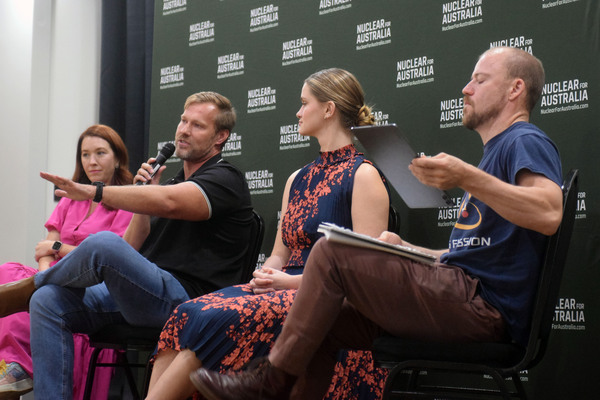
“We have a prohibition (on nuclear) at federal level,” she said, a result of a political deal decades ago when the government was trying to build the Opal reactor for medical science in Sydney. With little debate, an amendment was passed to ban nuclear energy and uranium enrichment.
“We needed nuclear medicine, there was no ambition for nuclear energy, and there was concern about Chernobyl,” she said.
“Decades later, we are having this discussion to lift that ban. There are state bans as well; there is one here in Victoria as well. It’s a political game. It’s not about public policy.”
Ms Braybon said the prohibition was recently amended to include submarines under AUKUS.
“Nuclear law government covers safety, like coal, but extra protections are in place to manage radiation,” she said.
“It (nuclear law) governs how much uranium we have, where it is, where it’s going. That is to manage nuclear security, to ensure no one is going to take that material and do anything silly with it.”
Ms Braybon said there were international safeguards.
“Countries, including Australia, report back to the International Atomic Agency, on how much nuclear material and technology we have, where it is and where it’s going. An international system is in place to record all this stuff. We do that today,” she said.
The agency comes to Australia and checks the country’s plant and uranium mines.
“We know where every gram of uranium is going. All laws are in place just to manage additional risk to nuclear. All is manageable in Australia.”
Questioned whether there was a realistic chance of lifting the prohibition, Ms Braybon said “it comes down to the numbers” in Parliament.
“Public sentiment – if the community thinks there is a social acceptance to nuclear energy in Australia, it helps change the mind of politicians who have to represent the voters,” she said.
Mr Schneider said that in West Virginia – coal country in the United States – in the last couple of years, they had lifted their nuclear ban.
“So, it is possible,” he said.




